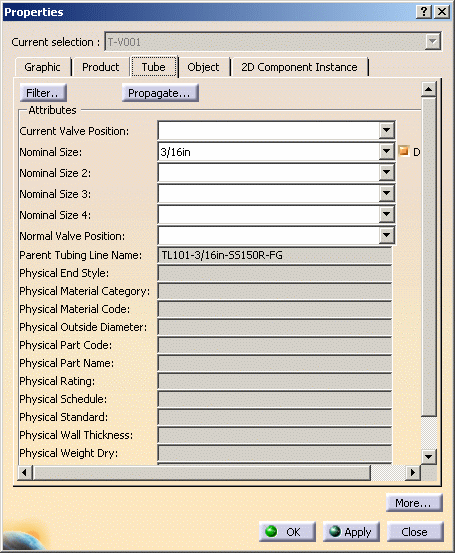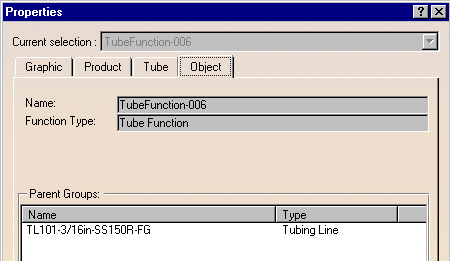
If the object cannot have derived values, the Derived checkboxes will not display. If a Derived checkbox is selected, it means the value is derived. If it is not checked the values are not derived. A value is considered to be derived when it is obtained from another object. For instance, a piping route may derive the values of some properties from the line ID of which it is a member.
- The Graphic tab allows you to change the looks.
- The Object tab displays information about the object such as ID, Function Class, Parent Group or Group Members, depending on the object being queried.
- Under the Product tab you can make changes to the basic Product in the specifications tree, such as renaming.
- Specific to Diagrams products are the following tabs: Piping, Equipment, Instrumentation, Tube, Waveguides and HVAC. They will display depending on the class of object whose properties you are editing. Click the More button if one of these tabs does not display, or if you want to see other tabs. More than one tab may display for some objects, such as Piping and Equipment, if the object has properties in more than one domain.
- The following tabs should be ignored, as they provide no usable function: 2D Component Instance, Mechanical and Feature Properties. Instead of using the functions provided by the tab 2DComponent Instance you should use the functions provided by this application. See Rotating a Component and Changing the Scale of a Component.
- The filter button lets you use the filter function. See Filter the Properties of an Object.
- The Propagate button does not always display. When it displays you can propagate the nominal size of an object to a line and its members. See Propagate Object Properties.
See Infrastructure documentation (Basic Tasks - Manipulating Objects - Displaying and Editing Graphic Properties) and Product Structure documentation (User's Tasks - Modifying Component Properties) for more information.

In this example Parent Groups shows you the line ID of which the Tube Function is a member.